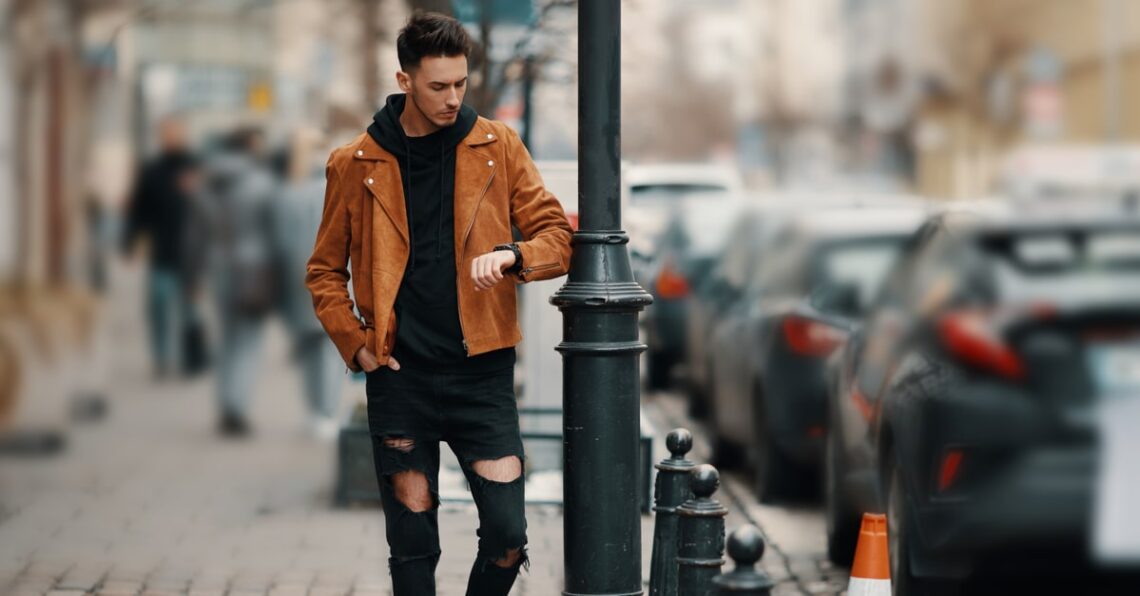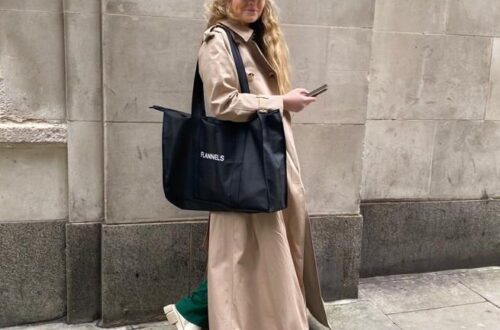Hey there, if you’re dipping your toes into the world of street style for the first time, welcome aboard. I still remember my early days fumbling through it – picture a guy in baggy jeans that swallowed his sneakers and a hoodie that screamed “I just rolled out of bed.” It was a mess, but those trial-and-error moments taught me a ton. Street style isn’t about chasing every trend; it’s about owning your vibe in the city chaos. Whether you’re dodging puddles on a rainy sidewalk or grabbing coffee downtown, this guide will arm you with practical tips to build a look that’s effortless, confident, and uniquely you. Let’s break it down step by step, from the basics to pro-level hacks, so you can step out feeling like the main character in your own urban story.
What is Street Style?
Street style, at its core, is fashion born from the streets – think everyday people mixing high-end pieces with thrift finds to create something raw and real. It’s heavily influenced by urban culture, pulling from skateboarding, hip-hop, and city life, where comfort meets creativity. Unlike runway fashion, it’s democratic; anyone can rock it with the right attitude. For beginners, start simple: focus on fit and personal expression to avoid looking try-hard.
The History of Urban Fashion
Urban fashion kicked off in the 1970s and ’80s with hip-hop pioneers like Run-D.M.C. sporting Adidas tracksuits and gold chains, turning sportswear into statements of identity. By the ’90s, skate culture added baggy jeans and graphic tees, while brands like Supreme blurred lines between street and luxury. Today, it’s evolved into a global mashup, but the roots remain in rebellion and self-expression. Knowing this history helps you appreciate why layering a hoodie under a jacket feels timeless.
Essential Pieces for Your Wardrobe
Building a street style wardrobe doesn’t require a fortune – it’s about versatile staples that mix well. Prioritize quality over quantity; a well-fitted item lasts longer and looks sharper. Here’s a breakdown of must-haves, with tips on why they work.
Tops for Everyday Versatility
Oversized hoodies and graphic tees form the backbone of urban looks, offering comfort without sacrificing edge. Go for neutral colors like black or gray for easy pairing, but add a bold print for personality. I once wore a vintage band tee to a casual meetup and got more compliments than my fancier shirts ever did – proof that simple can steal the show.
Bottoms That Ground Your Outfit
Baggy jeans or cargo pants are kings here, providing that relaxed silhouette street style thrives on. Opt for high-waist cuts to balance proportions, especially if you’re layering tops. Denim in dark washes transitions from day to night seamlessly, and they’re forgiving for beginners experimenting with fits.
Footwear Fundamentals
Sneakers like classic Nikes or Adidas are non-negotiable – they’re the heartbeat of urban fashion. For variety, try chunky dad shoes or sleek low-tops. Comfort is key; I learned the hard way after blisters from ill-chosen kicks ruined a whole day out. Invest in one versatile pair first.
Outerwear for Layering
A denim jacket or bomber adds depth to any ensemble, perfect for unpredictable city weather. Look for pieces with subtle distressing for that lived-in feel. Layering isn’t just practical; it creates visual interest, turning a basic tee and jeans into something intentional.
To help visualize, here’s a quick comparison table of essential pieces versus common alternatives:
| Category | Essential Piece | Why It Works | Alternative to Avoid | Why Skip It |
|---|---|---|---|---|
| Tops | Oversized Hoodie | Comfortable, versatile layering | Tight-Fit Polo | Too preppy for urban vibe |
| Bottoms | Baggy Jeans | Relaxed silhouette, durable | Skinny Chinos | Restricts movement, dated look |
| Footwear | Chunky Sneakers | Adds height and edge | Dress Shoes | Too formal, clashes with casual |
| Outerwear | Denim Jacket | Timeless, pairs with everything | Leather Blazer | Overly structured for streets |
How to Mix and Match Outfits
Mixing street style is like crafting a playlist – blend highs and lows for harmony. Start with a neutral base, like black jeans and a white tee, then layer a colorful jacket or patterned shirt. Balance oversized tops with fitted bottoms to avoid drowning in fabric. I recall mixing a thrift-store flannel with new sneakers; it felt authentic and drew nods from strangers – that’s the magic of thoughtful combos.
Layering Techniques for Depth
Layering builds dimension: tee under hoodie under jacket. Use textures like cotton against denim for contrast. In cooler months, add a scarf; it’s functional and stylish. Keep it light – too many layers can feel bulky, like that time I overdid it and sweated through a fall walk.
Color Coordination Tips
Stick to a palette of three colors max per outfit – earth tones for beginners. Pops of red or neon add urban flair without overwhelming. Monochrome looks (all black) are foolproof; they elongate your frame and exude confidence on busy streets.
Pros and Cons of Bold Patterns
Pros: Patterns like camo or stripes inject personality and hide minor stains – ideal for city life. Cons: Overdo it, and you risk clashing; start small with one patterned item. Weigh this when shopping; a subtle stripe tee offers more mileage than loud prints.
Accessorizing Your Look
Accessories elevate street style from basic to boss. Hats, chains, and bags add flair without much effort. A beanie softens a tough outfit, while a crossbody bag keeps hands free for urban adventures. Remember, less is more – I once overloaded with jewelry and felt like a walking display case; now I stick to two or three pieces max.
Choosing the Right Jewelry
Chunky chains or minimalist rings nod to hip-hop roots. Silver works for cool tones, gold for warm. Pros: Builds character. Cons: Cheap pieces tarnish fast; invest in quality to avoid regrets.
Bags and Hats for Functionality
Backpacks or sling bags merge style with practicality for carrying essentials. Bucket hats shield from sun while adding ’90s nostalgia. They’re affordable entry points – great for testing waters.
Current Trends in 2025
2025 street style leans into retro vibes with baggy ’90s jeans and pastel polos making waves. Short shorts pair with oversized tees for summer, while sustainable fabrics like recycled denim gain traction. Tech-infused gear, like smart sneakers, blends function with fashion. I’ve been eyeing wide-leg pants; they feel fresh yet familiar.
Common Mistakes to Avoid
Newbies often over-layer or ignore fit, ending up sloppy. Skip ultra-skinny jeans – they’re outdated and restrictive. Don’t match everything perfectly; mismatches add edge. I dodged a bullet early by ditching mismatched sneakers that threw off my whole vibe.
Pros and Cons of Trend-Chasing
Pros: Keeps you current and excited. Cons: Trends fade fast, wasting money; focus on timeless pieces instead.
Where to Get Started Shopping
Head to Urban Outfitters for affordable basics or thrift stores like Goodwill for unique finds. Online, check ASOS for global trends. Local sneaker shops offer personalized advice – better than big-box chaos.
Best Brands for Beginners
Brands like Nike and Adidas dominate for sneakers, while Uniqlo nails affordable hoodies. Supreme for hype, but start with H&M for budget-friendly options. Here’s a table comparing beginner-friendly brands:
| Brand | Best For | Price Range | Why Beginner-Friendly |
|---|---|---|---|
| Nike | Sneakers | $80-150 | Durable, iconic styles |
| Uniqlo | Basics | $20-50 | Quality at low cost |
| Levi’s | Denim | $60-100 | Timeless fits |
| Adidas | Tracksuits | $50-120 | Versatile urban wear |
For more on sneakers, check our internal link to best urban sneakers guide. Externally, browse Nike’s streetwear collection.
People Also Ask
Based on common searches, here are real questions folks ask about men’s urban fashion:
What is the difference between streetwear and urban fashion?
Streetwear focuses on casual, trend-driven pieces like hoodies and sneakers, while urban fashion encompasses broader city-inspired styles, including tailored elements. Both prioritize comfort, but urban can mix in smarter looks.
How do I start building a street style wardrobe on a budget?
Begin with thrift stores for vintage gems and sales at H&M or Zara. Focus on five versatile items: jeans, tee, hoodie, sneakers, jacket. Build slowly – quality thrift finds often outshine cheap new buys.
What are the best sneakers for men’s street style?
Classics like Nike Air Force 1 or Adidas Stan Smith shine for versatility. For 2025, chunky soles add edge. Pair with jeans for an instant upgrade.
Is street style only for young people?
Absolutely not – it’s ageless. Older guys rock it with tailored twists, like a bomber over chinos. Confidence trumps age every time.
FAQ
How can I make my street style look more unique?
Incorporate personal touches like custom patches on jackets or mixing eras – ’90s jeans with modern tees. Experiment, but keep fit in check.
What fabrics work best for urban fashion?
Cotton and denim for durability; add nylon for weather resistance. Avoid synthetics that pill easily – they cheapen the look.
Are there rules for layering in street style?
Balance volumes: oversized top with slim bottoms. Limit to three layers max to stay comfortable. Test in a mirror before heading out.
How do I transition street style from day to night?
Swap sneakers for boots and add a chain. Darker colors help; it’s all about subtle elevation without overhauling.
What’s the biggest tip for beginners?
Fit is everything – tailor if needed. A well-fitted $20 tee beats a baggy $200 one. Practice outfits at home to build confidence.
Wrapping this up, street style is your playground – experiment, learn from slips, and own it. I went from awkward outfits to turning heads by focusing on these tips. Hit the streets, mix it up, and watch your confidence soar. If you’re ready to shop, start small and build. You’ve got this.



